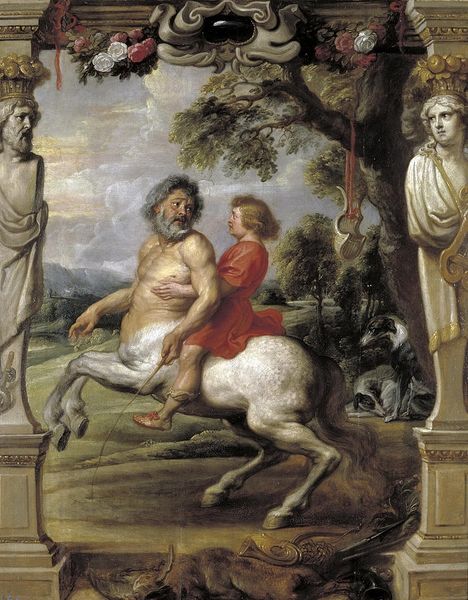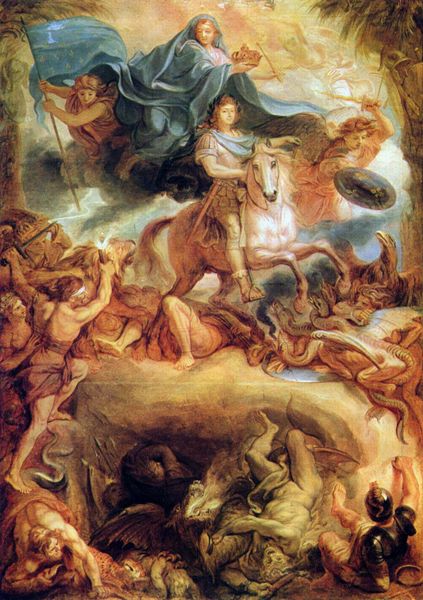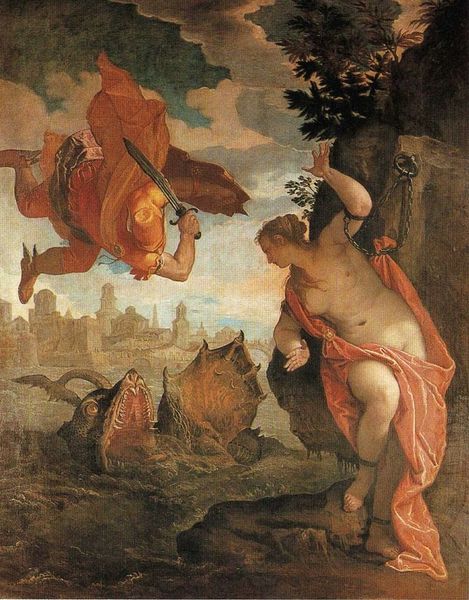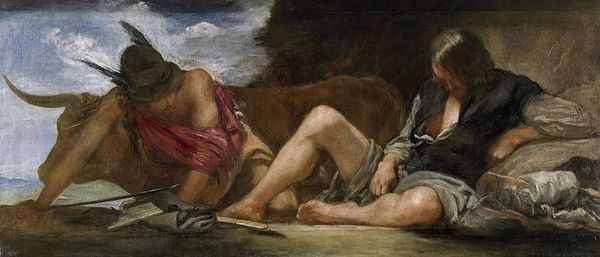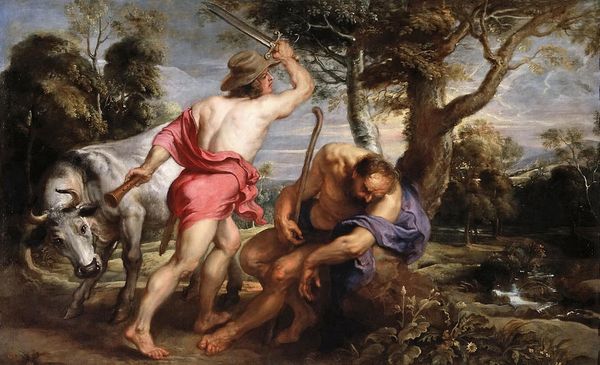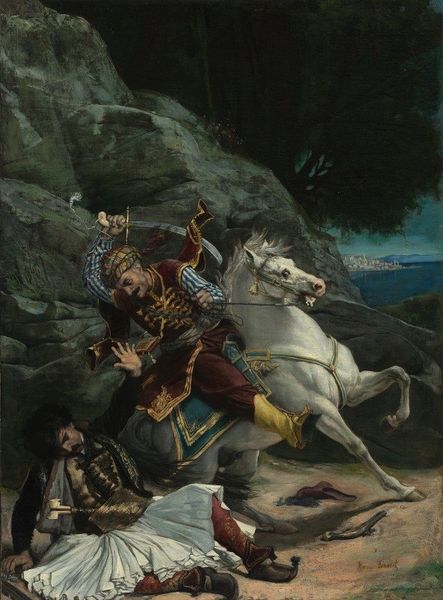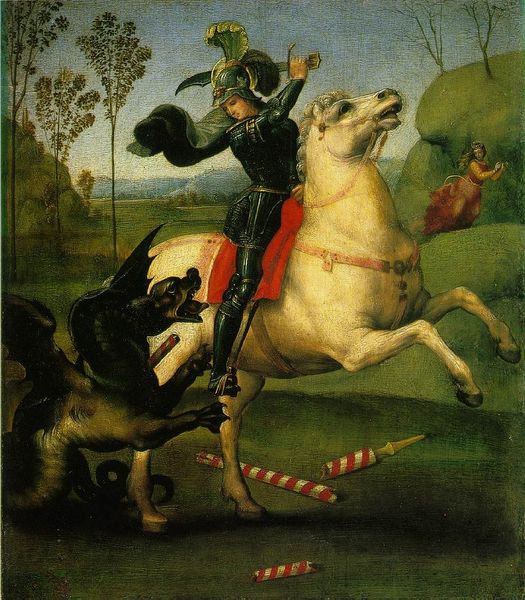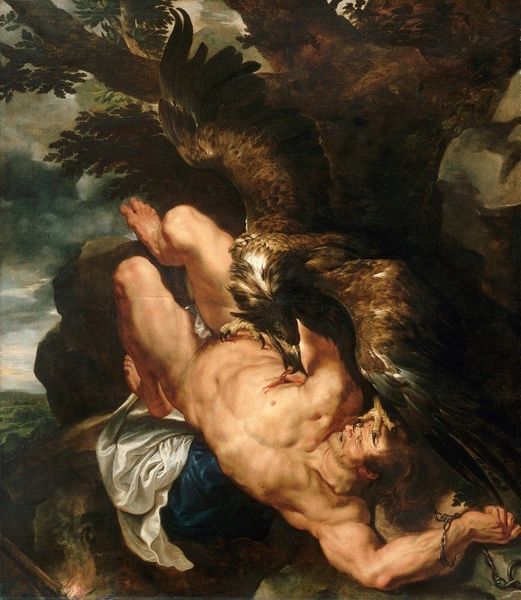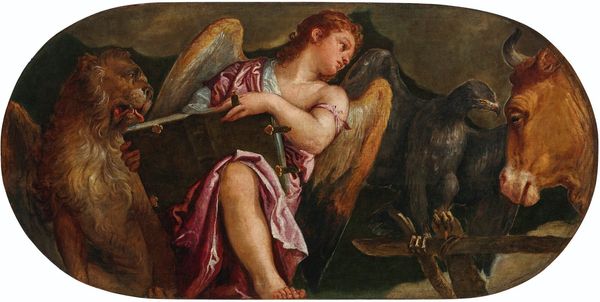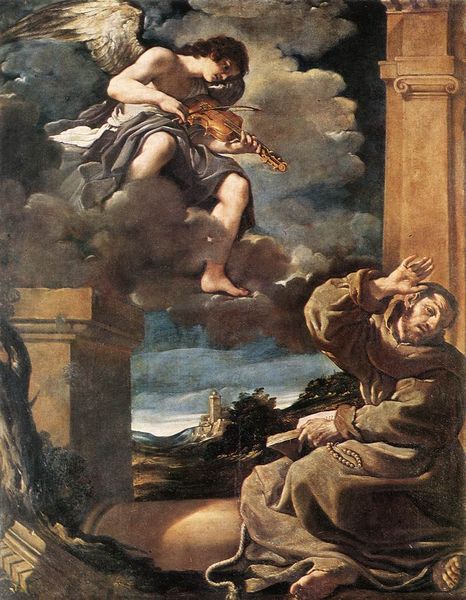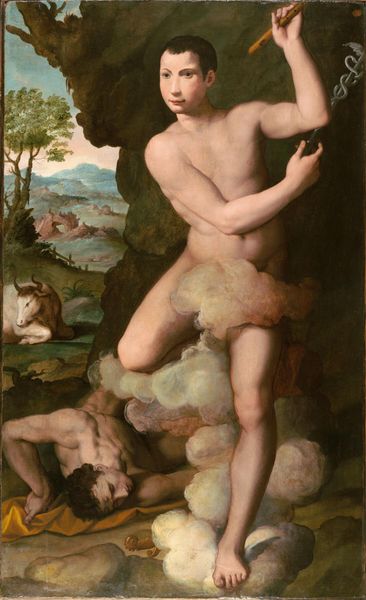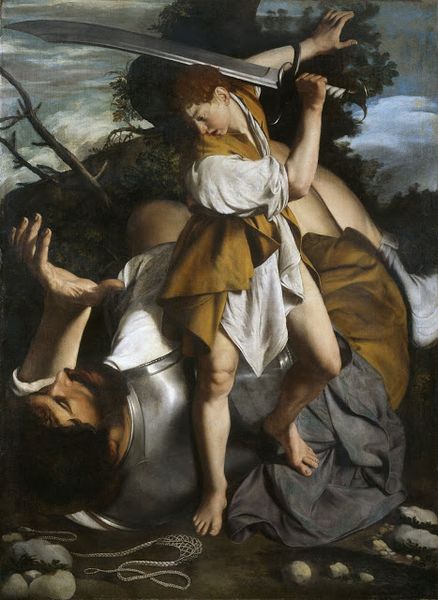
oil-paint
#
allegory
#
oil-paint
#
landscape
#
mannerism
#
oil painting
#
christianity
#
mythology
#
history-painting
#
christ
Dimensions: 177.5 x 128.5 cm
Copyright: Public domain
Curator: We’re now in front of Parmigianino's “The Conversion of St Paul,” an oil painting from 1528, presently housed in the Kunsthistorisches Museum in Vienna. Editor: What immediately strikes me is the sheer scale and dynamism of the horse! It completely dominates the composition, rearing up as if startled, yet simultaneously angelic with its pure white coat. Curator: Absolutely, and it’s critical to understand how Parmigianino engages with the socio-political moment through the painting. His Mannerist style provides commentary about upheaval and calls into question accepted norms. Here, Saint Paul, an agent of the empire, is thrown off his high horse, so to speak. This suggests not only a moment of religious epiphany, but also potentially echoes popular calls to reform the excesses and corruption of imperial Rome. Editor: Yes, and the horse becomes almost like a vessel for the divine; consider its position in the composition as related to the rays of light that seem to shine only upon the beast. And I’m fascinated by the detail that resembles peacock feathers only upon the back portion of the animal’s form. Peacocks can carry so much religious weight—resurrection and renewal but also pride, even vanity. How do you understand this imagery? Curator: That's a compelling point. I see the incorporation of these classical, almost pagan symbols—given how the image is constructed visually with what appears to be animal feathers--not only signaling the moment of divine intervention within the frame, but how this vision challenges the viewer. Parmigianino would have understood that not only Saint Paul needed converting, but also the viewer would come to have a perspective that differs before and after observing. Editor: Indeed! I do like your observation that one perspective must shift to another. The rendering really creates the sense of dramatic immediacy, but also reveals how images often become points of transformation themselves. Curator: It's the kind of work that benefits from multiple interpretations and perhaps even conflicting views. It makes us reconsider how both history and art play a role in our understandings today. Editor: Ultimately it asks us to reconsider what symbols represent and what role images will play within belief itself.
Comments
No comments
Be the first to comment and join the conversation on the ultimate creative platform.
